PROTECT YOUR DNA WITH QUANTUM TECHNOLOGY
Orgo-Life the new way to the future Advertising by AdpathwayBy the time October arrives, fall is undoubtedly here. Maple and hickory leaves have changed from green to crimson and gold, and chilly nights prompt us to break out the sweaters we’ve had tucked away for the summer. There’s no mistaking that winter is on its way.
Many garden plants have slowed their growth as they prepare for winter, and critters work to get ready for the dark months ahead. If you want to support birds, mammals, and insects throughout the winter, consider taking a few steps to maintain an optimal wildlife garden in October.
I’ll share some actions you can take to help support wildlife in the garden through October and into the winter, and remind you which common cleanup steps you can skip. Because not completing specific garden tasks often helps wildlife more than putting in extra work.

Purple Coneflower Echinacea

Purple Coneflower Echinacea Seeds
Mongolian Giant Sunflower

Mongolian Giant Sunflower Seeds
Avoid Cutting Back Flowers and Grasses
 These spaces provide habitats for wildlife.
These spaces provide habitats for wildlife. By the time October arrives, many flowers and grasses have lost their brilliant colors and transformed into various shades of crunchy brown. These duller colors prompt gardeners to grab their clippers and cut this dried growth back to the ground. But if you want to support wildlife, leave these plants in place!
Old plant material provides food and habitat for animals ranging from insects to birds to amphibians, so leaving it in the garden is an easy way to benefit wildlife.
Provide Food for Birds
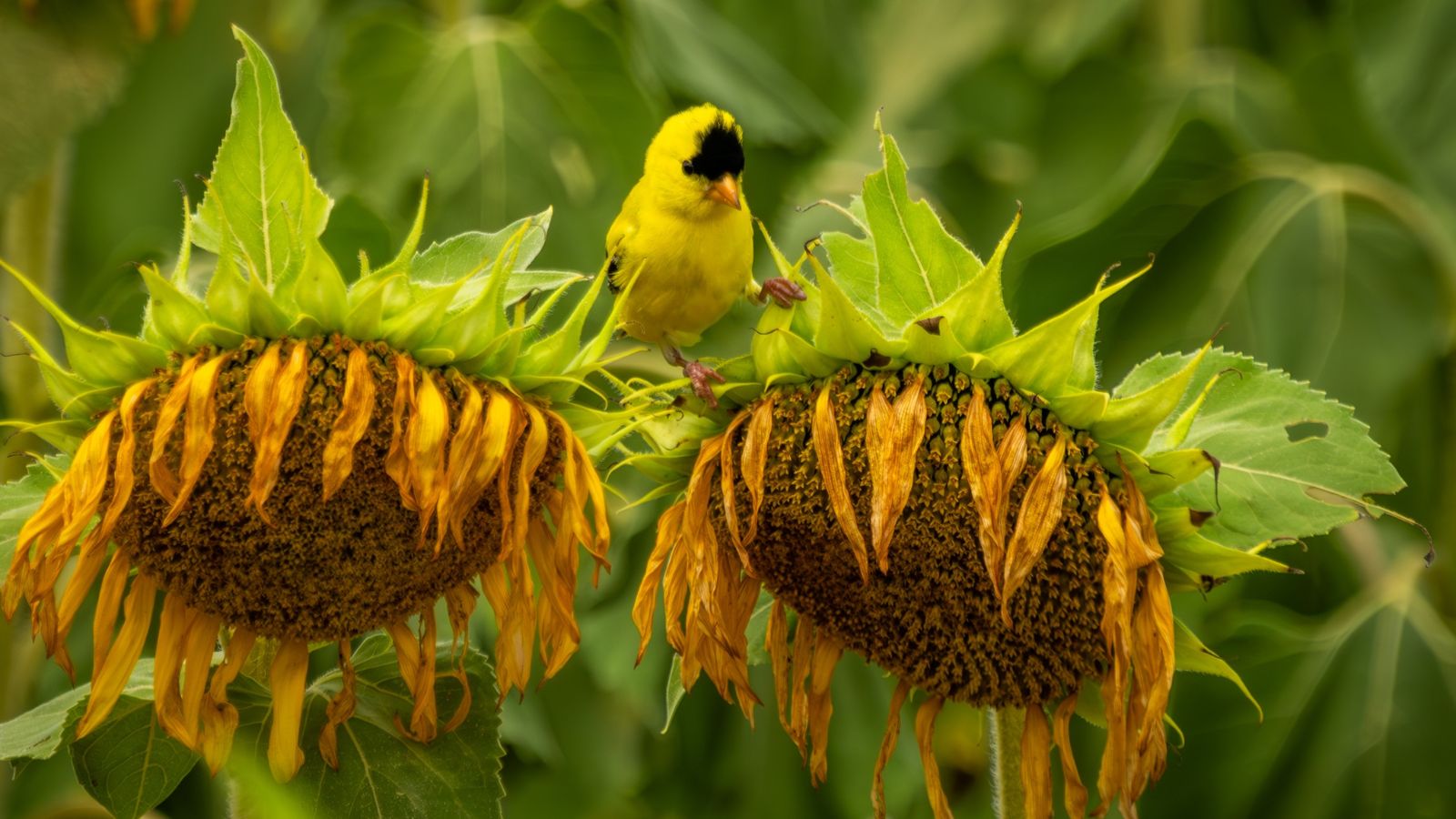 Leave seedheads on plants to attract birds.
Leave seedheads on plants to attract birds. Flowers, including thistles, sunflowers, black-eyed Susans, and coneflowers, produce nutritious seeds that feed birds such as goldfinches, sparrows, juncos, and chickadees. Instead of purchasing birdseed at the store, leave these seedheads in place to create a natural buffet for the birds.
Some gardeners are hesitant to leave these plants in place once their vibrant summer colors fade. Believe me when I say that watching a flock of goldfinches descend to eat the seeds provides a type of beauty unlike anything else.
Provide Habitat for Insects
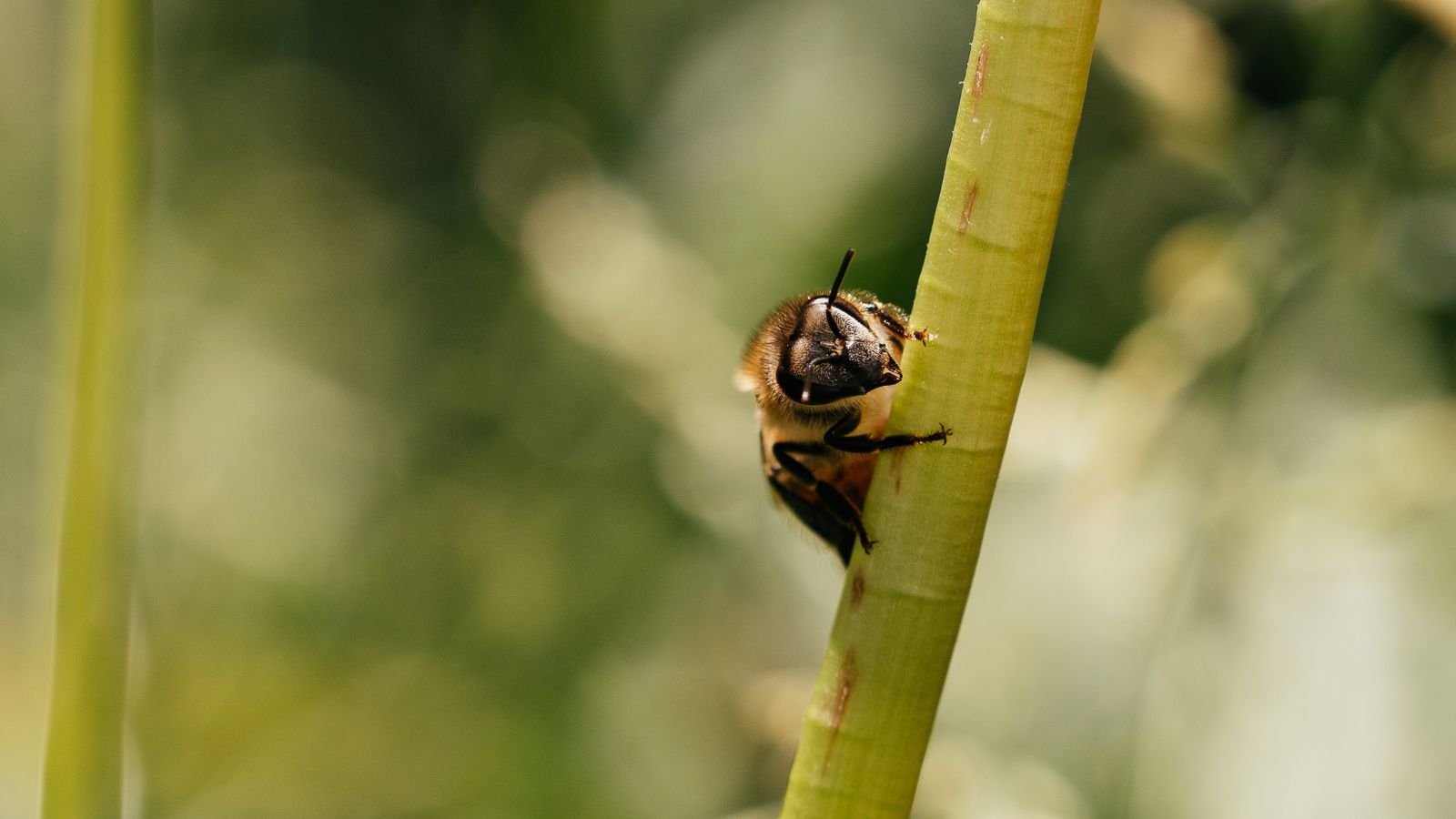 Don’t cut back flowers with hollow stems.
Don’t cut back flowers with hollow stems. Many perennial flowers have hollow stems resembling small straws. These tiny crevices provide the perfect home for vulnerable larvae as they develop into bees, wasps, and moths.
In the summer, cavity-nesting bees and wasps find small holes in the stems and lay their eggs. The eggs soon hatch, and the larvae remain tucked in the stem throughout the summer. They then spend the winter in the stems, before emerging as adults the following spring.
Since different insects prefer stems of various sizes, aim to leave a diversity of stems in your October wildlife garden. Leaving yucca stems and raspberry canes will help large carpenter bees, and letting smaller wildflowers remain in place supports tiny wasps and bees.
If You Can’t Resist Trimming
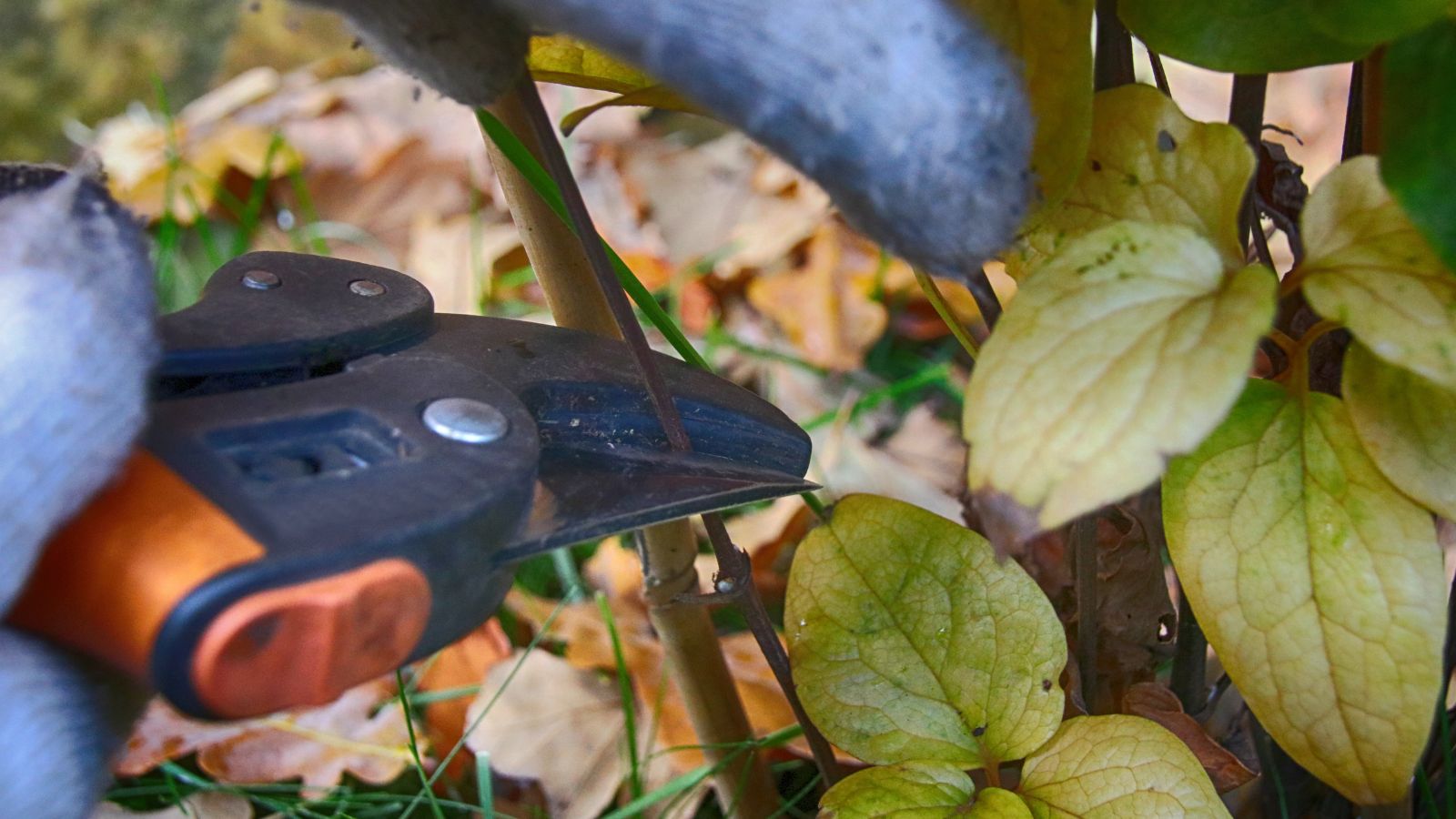 If you have to cut, keep the materials in your garden.
If you have to cut, keep the materials in your garden. If you want to trim your perennials, you can still take steps to support wildlife as much as possible. First, avoid cutting the stems all the way to the ground. Instead, leave 8 to 24 inches of stem to support insects that have different cavity preferences.
After you cut the stalks, avoid removing them from your garden. Sending organic materials to the landfill is a waste of resources, and you never know what’s living inside these tiny stems.
To maintain a tidy appearance, stack the stems in piles along the edges of your garden. This will allow overwintering insects to remain in the garden and emerge the following spring.
Leave the Leaves
 Fallen leaves should remain where they are to help insects.
Fallen leaves should remain where they are to help insects. When leaves fall from the trees, it’s time to grab the rake or leafblower…or at least that’s what you may think. However, if you’re looking to build the best October wildlife garden, let the leaves remain where they fall.
Leaving leaves in your yard and garden benefits more than wildlife. Here are a few other benefits that leaves provide:
- Weed suppression
- Improved soil moisture retention
- Increased soil organic matter
- Nutrient input
Fallen leaves provide numerous benefits to wildlife, including butterflies, beetles, spiders, chipmunks, and toads. Insects overwinter in the litter as adults, pupae, larvae, and eggs. So, raking leaves and tossing them on the curb means you’re throwing out the pollinators you worked so hard to support the rest of the year.
These leaves also provide shelter and insulation. Without this organic material, wildlife will have a more difficult time surviving cold winters unharmed.
Tips for Tidying Leaves
 If you have to tidy, keep the leaves in one large pile.
If you have to tidy, keep the leaves in one large pile. The best way to help build an October wildlife garden is to leave leaf litter where it falls. That means no raking, mowing, blowing, or shredding. Unfortunately, not every neighborhood or municipality recognizes the benefits of a lawn covered in leaves.
If you live in an area that requires you to maintain a traditionally tidy lawn, you can take steps to achieve a neat appearance while still allowing the leaves to support wildlife.
Forgo mowing, since this will likely kill any insects hiding in the leaves. Instead, blow or rake the leaves into piles on the exterior of your garden or into the backyard. The overwintering wildlife will remain protected, and your yard will remain tidy.
Provide a Source of Fresh Water
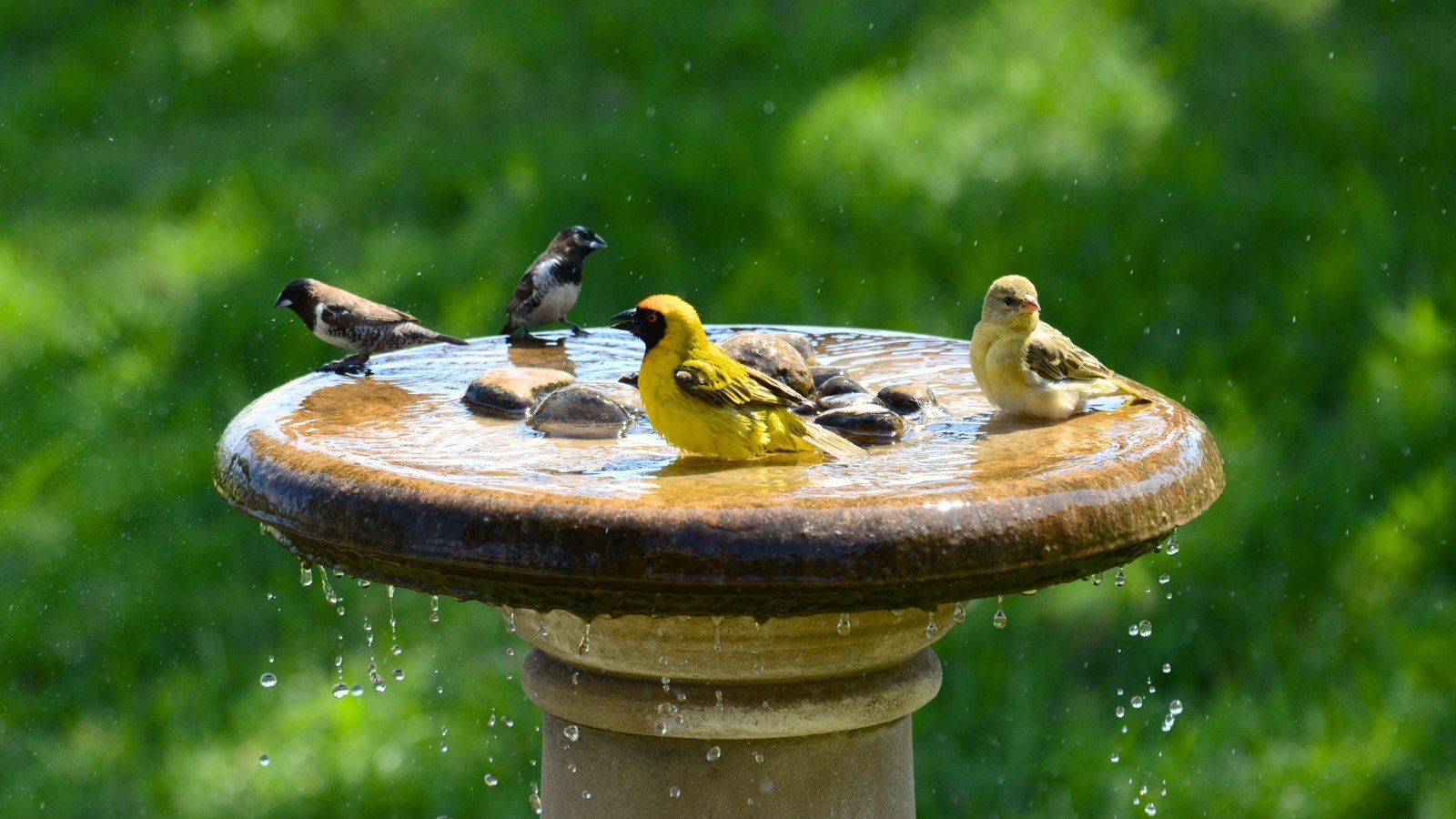 Keep bird baths clean and topped up with fresh water in October.
Keep bird baths clean and topped up with fresh water in October. The cooler fall days make it easy to forget that birds, mammals, and insects still need water to survive. Although water is often more abundant than it is in the summer, supplying a source of fresh water will help attract wildlife to your garden and prepare them for the upcoming winter.
A birdbath is a common and simple way to provide animals with the water they need. Be aware that these water sources can spread diseases like Salmonella and house finch eye disease.
Refilling your bath with fresh water every other day helps keep the water clean and prevents the spread of disease. You should also wash the birdbath or dish once a week. Avoid synthetic soaps that can strip oils from bird feathers. Instead, opt for a diluted vinegar solution.
Avoid Picking Up Nuts and Fruits
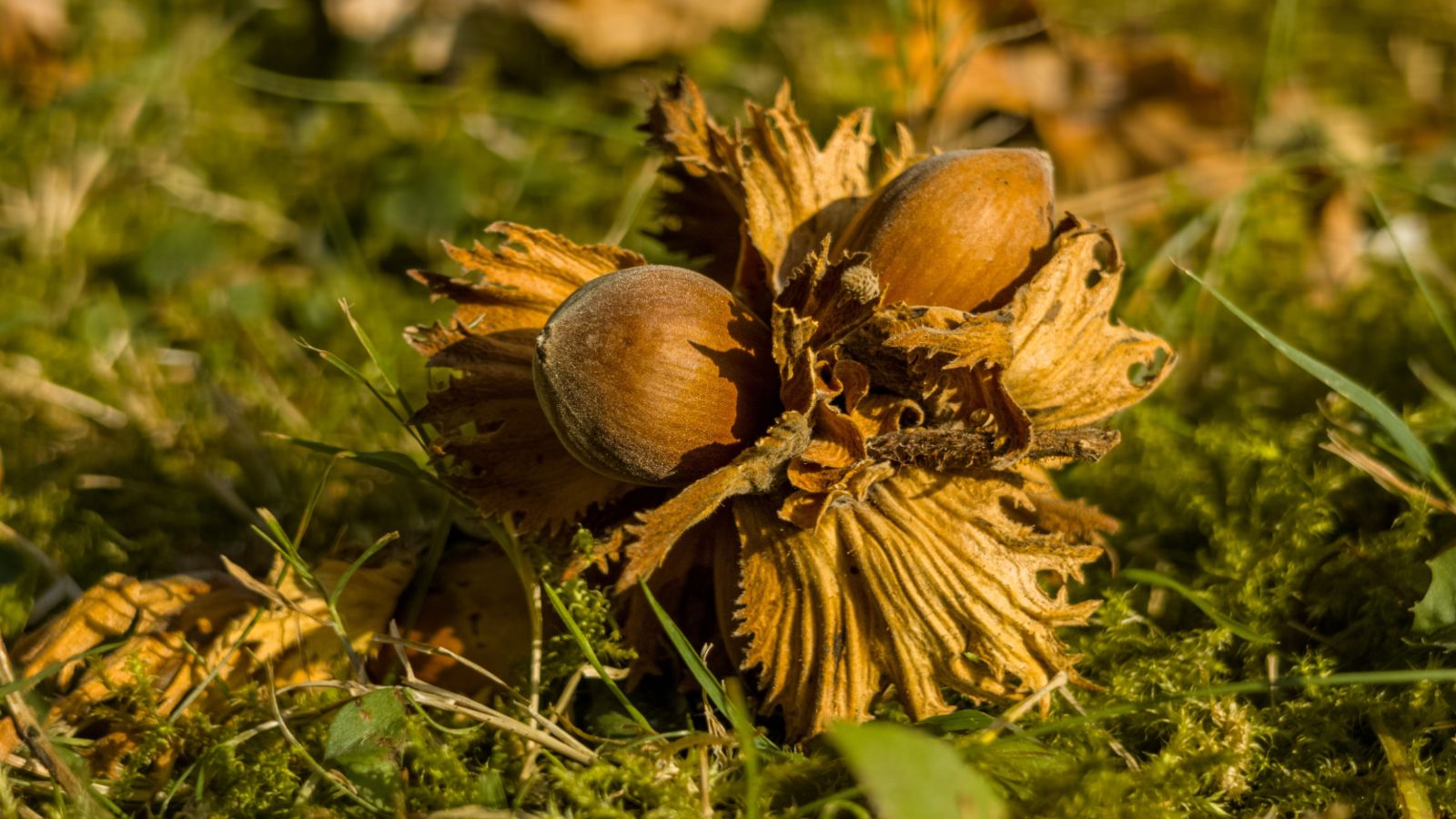 Leave fallen nuts on the ground for wildlife to collect.
Leave fallen nuts on the ground for wildlife to collect. Many trees and shrubs spend the entire summer working to produce nutrient-dense nuts and fruits. These goodies contain the seeds that may eventually turn into the plants’ offspring, and they also provide fuel for wildlife throughout the winter.
Leaving these edible items in place provides food for wildlife, including turkeys, deer, raccoons, squirrels, foxes, bears, and songbirds. Some of these critters eat the fruits and nuts as needed, and others cache them away to enjoy throughout the winter.
Here are a few trees and shrubs that provide food for wildlife during the fall and winter:
- Oaks
- Hickories
- Persimmons
- Crabapples
- Sweetgums
- Virbunums
- Chestnuts
- Hazelnuts
- Hollies
- Cherries
- Cedars
- Serviceberries
While wildlife find these plants’ nuts and fruits delicious, some humans think they’re messy or annoying. I’ll be the first to admit that it’s no fun walking through a yard covered with sweetgum fruits or chestnuts. But if you’re patient, wildlife will appear and remove these objects from your garden.
If you really want to remove nuts and fruits from your yard, rake them into a pile, then relocate them to an unused section of your yard or garden. Wildlife will still be able to enjoy the treats, and you won’t have to worry about a messy yard.
Add Plants that Support Wildlife
 Grow perennials that help pollinators season after season.
Grow perennials that help pollinators season after season. October is also a great time to consider how you can improve your future garden for wildlife. If you live in zones 7 to 10, early October is an ideal time to plant trees, shrubs, and herbaceous perennials that will support wildlife in the upcoming years.
If you’re unsure where to start, look at your region’s native plants. These plants naturally grow where you live, so they provide food and shelter for native wildlife without choking out other vegetation. When you’re looking at native plants, be sure to pay attention to each plant’s soil moisture and light requirements.
Plants that produce nuts and fruits are great for supporting mammals and birds. The best species for your garden will depend on your location and goals, but here are a few to consider:
- Serviceberries
- Oaks
- Cherries
- Hickories
- Hollies
- Persimmons
Wildlife will also be thankful for evergreens that provide year-round shelter from harsh weather and predators. Mixing conifers with broadleaf evergreens will create a diverse habitat that offers food and protection for wildlife ranging from squirrels to finches to black bears.
- Pines
- Hemlocks
- Cedars
- Rhododendron
- Hollies
You can also plant perennial flowers and grasses that provide food and habitat for all kinds of insects. Many people know that nectar-rich blooms help support bees and butterflies, but you should also consider which plants serve as host plants for butterflies.
Milkweed is well-known to support migrating monarchs, but there are hundreds of other plants that support various butterflies. Asters, passionflower, ironweed, coneflowers, and thistles are a few plants that feed caterpillars as they grow.
Planting a diverse array of plant families will help support a wide range of butterflies in the years ahead.


 12 hours ago
8
12 hours ago
8

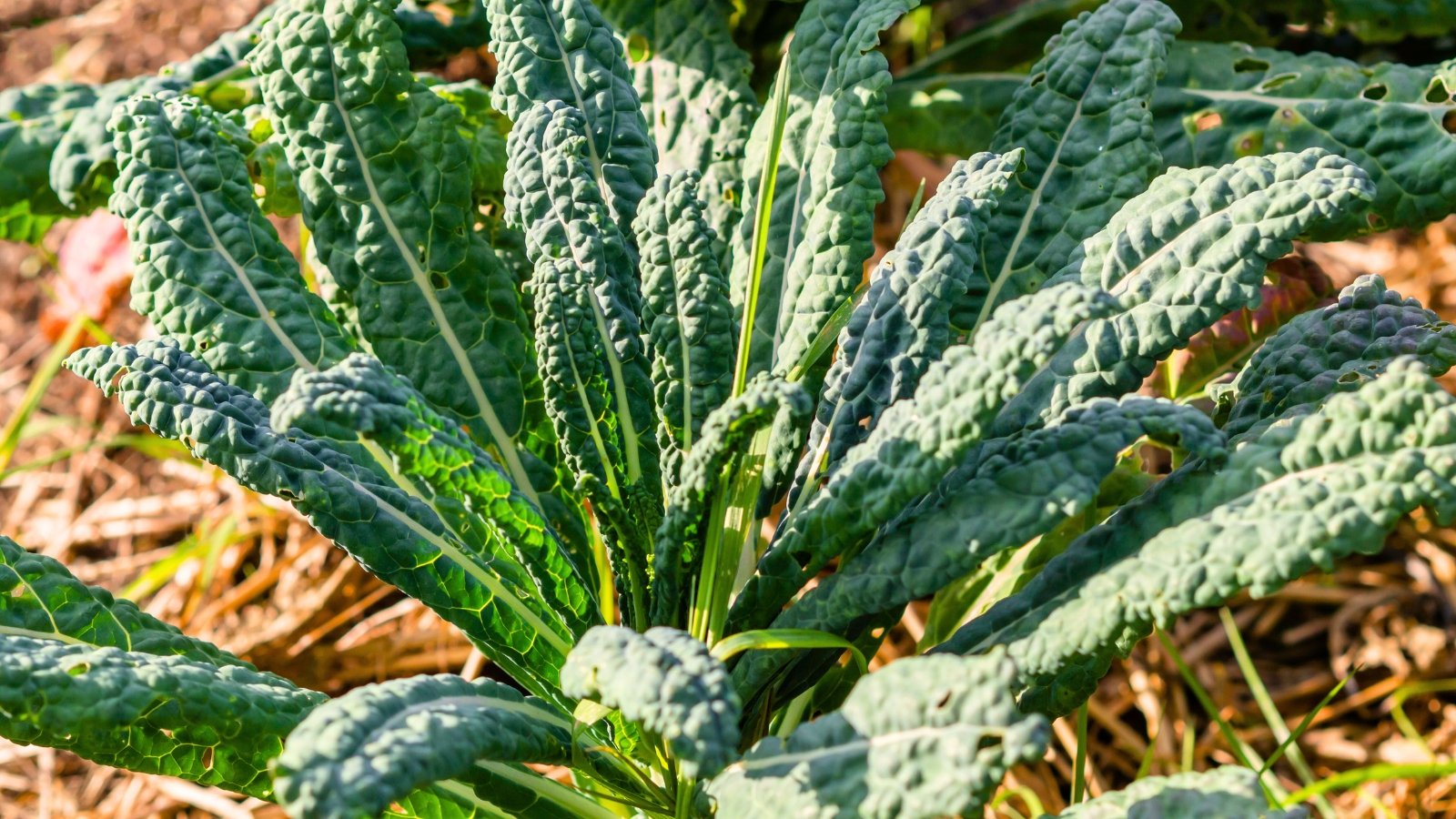


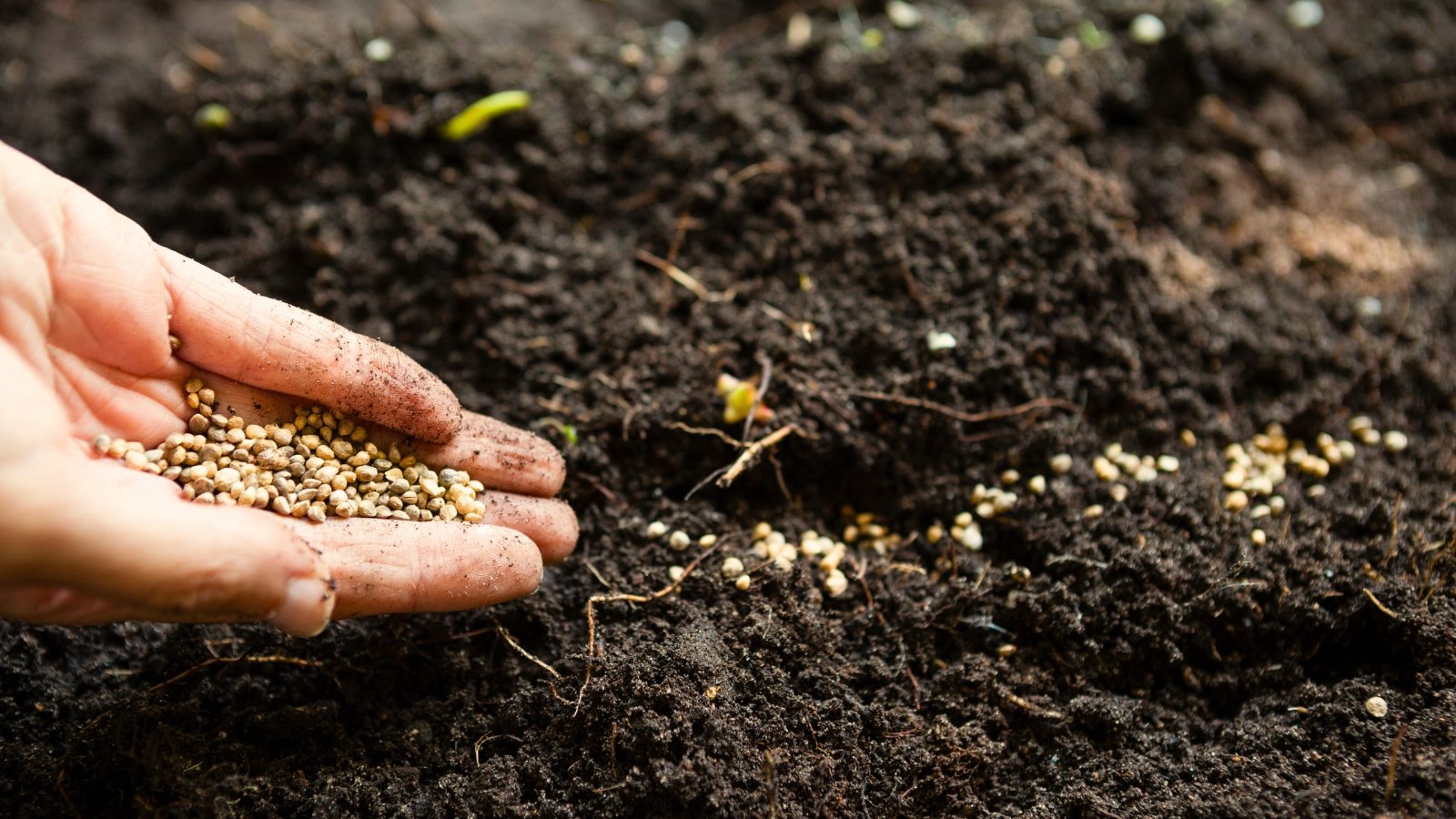
















 English (US) ·
English (US) ·  French (CA) ·
French (CA) ·